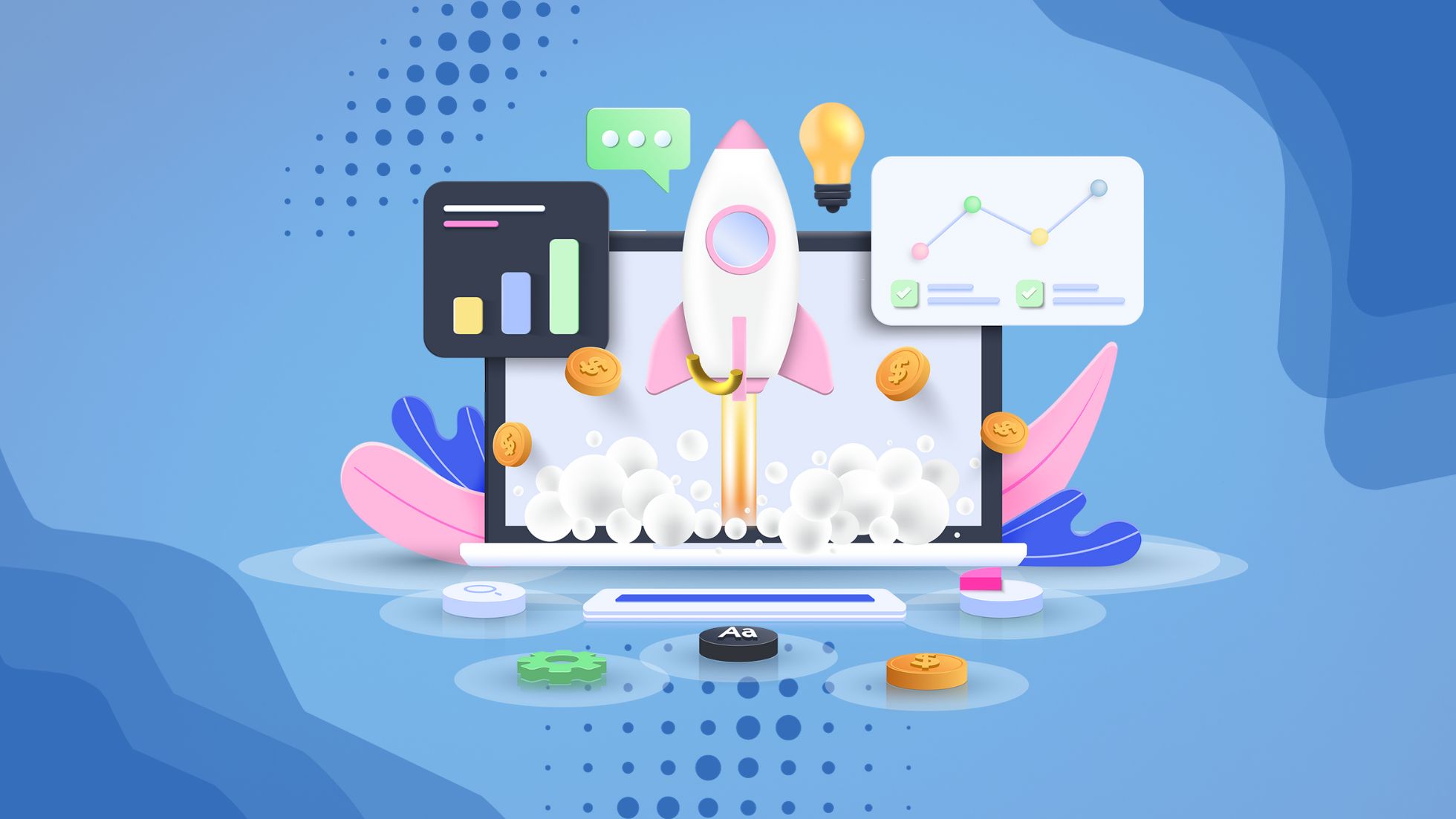The world of programming business applications is about to get a major facelift, thanks to the dynamic trio of artificial intelligence (AI), large language models (LLMs), and automation. These tech marvels are not just boosting the efficiency and prowess of software development; they’re flipping the script on how business applications are dreamed up, built, and rolled out. In this blog, we’ll take a crystal ball to the future of programming business applications, spiced up with insights from an interview with Eric Schmidt, the former Google bigwig. We’ll also spotlight the movers and shakers like OpenAI, Google, Anthropic, Mistral, NVIDIA, and the ever-buzzing open-source AI community. Plus, we’ll peek into how businesses will twist and turn to keep up with these tech revolutions.
In a recent, highly insightful interview, Eric Schmidt, the former CEO of Google, shared his perspective on these developments, offering a glimpse into how AI will reshape not only the tech industry but also the global economy.
Schmidt’s discussion highlights not just the technological advancements in AI, such as large context windows and AI-driven agents, but also the broader implications these innovations hold for businesses and nations. He underscores a critical, often overlooked aspect of this transformation: the pivotal role of energy resources in sustaining the computational power needed to drive these AI advancements. As AI continues to scale, access to vast energy reserves could become a deciding factor in the economic prosperity of nations, potentially redrawing the map of global wealth and influence.
1. The Rise of Large Context Windows and AI-Driven Development
One of the most fascinating advancements discussed today is the creation of large context windows, which greatly improve the short-term memory capabilities of AI models. This enhancement enables AI to process and retain a larger amount of information at once, significantly boosting the efficiency and accuracy of complex programming tasks. The introduction of 100M token context windows, as developed by Magic AI, represents a major advancement in AI's ability to handle vast amounts of data during inference. This innovation allows models to process up to 100 million tokens of context—equivalent to around 10 million lines of code or 750 novels—without needing to rely solely on training. The goal is to enhance in-context learning, particularly in domains like software development, where having access to an entire codebase, documentation, and external libraries during inference can lead to more accurate and relevant outputs.
100M Token Context Windows. (n.d.). https://magic.dev/blog/100m-token-context-windows
Implications for Business Applications
In practical terms, large context windows enable AI-driven programming tools to better understand the broader context of a project. For example, when developing a business application, these tools can retain and recall vast amounts of project-specific data, reducing the need for constant re-referencing and context-switching, which are common challenges in traditional software development. This leads to more cohesive and streamlined code, fewer errors, and faster development cycles.
As companies like OpenAI, Anthropic, and Google continue to push the boundaries of AI capabilities, the integration of large context windows in AI models will become more prevalent, particularly in business applications where handling complex, interconnected processes efficiently is crucial. These developments will enable enterprises to deploy more sophisticated applications with greater speed and precision, giving them a competitive edge in the market.
2. AI Agents and Text-to-Action Technologies: A New Paradigm in Application Development
Schmidt also discusses the emergence of AI agents capable of converting arbitrary language commands into digital actions. This development could revolutionize the way business applications are created and managed, with profound implications for how businesses operate.
From Code to Action: Automating the Development Process
Imagine a scenario where a business leader could simply describe a new feature or product in plain language, and an AI agent would immediately start building it—integrating existing systems, writing necessary code, and even deploying the application. This vision, while still in its infancy, is rapidly becoming a reality, driven by the efforts of projects like OpenAI, Gemini, Mistral and Anthropic.
These AI agents can serve as virtual team members, capable of handling repetitive coding tasks, debugging, and even generating new features based on user feedback. This could significantly reduce the need for large development teams, allowing businesses to scale their applications quickly and efficiently with minimal human intervention.
Cursor, the AI-first code editor, is designed to enhance developer productivity through its AI-powered features. By integrating advanced AI models like GPT-4, it provides intelligent code completion, multi-line edits, and code generation, allowing developers to write and refactor code more efficiently. Its capabilities include real-time bug detection, project-specific code searches, and automated code generation, which significantly reduce time spent on repetitive tasks. Cursor also facilitates collaboration with built-in pair-programming features and a deep understanding of entire repositories, helping teams work seamlessly together on complex projects.
Features | Cursor - The AI-first Code Editor. (n.d.). https://www.cursor.com/features
3. The Impact of Leading AI Companies on Software Development Models
The future of programming business applications is closely tied to the evolution of AI models, particularly in how they are trained and deployed. Schmidt emphasizes the need for massive investments in AI research and infrastructure, as well as the importance of international collaboration to advance these technologies. Companies behind the projects like OpenAI, Gemini, Mistral and Anthropic are at the forefront of this evolution, each contributing uniquely to the AI landscape.
OpenAI: Pioneering Large Language Models
OpenAI has been a trailblazer in the development of large language models, with its GPT series leading the charge. The company's models have demonstrated remarkable capabilities in understanding and generating human-like text, making them invaluable tools for automating various aspects of software development. As OpenAI continues to refine its models, we can expect even more sophisticated AI-driven tools that can handle increasingly complex programming tasks, further reducing the need for human intervention.
Google: Integrating AI into Enterprise Solutions
Google, with its deep expertise in AI and cloud computing, is uniquely positioned to integrate AI into enterprise solutions. The company's advancements in AI-driven development tools, such as its AutoML suite, are enabling businesses to leverage AI without requiring deep technical expertise. As Google continues to enhance its AI offerings, businesses will be able to deploy more intelligent, scalable, and efficient applications, transforming how they operate and compete in the marketplace.
Anthropic: Ethical and Responsible AI
Anthropic, a company focused on developing AI systems that are aligned with human values, is contributing to the future of programming business applications by emphasizing ethical AI development. As AI becomes more integral to business operations, the need for responsible and transparent AI practices will grow. Anthropic's approach ensures that AI systems are not only powerful but also safe and aligned with the ethical standards of the businesses that use them.
Mistral: Innovation in Open-Source AI
Mistral, known for its contributions to open-source AI, is playing a crucial role in democratizing access to advanced AI technologies. By making cutting-edge AI tools available to the broader developer community, Mistral is fostering innovation and enabling smaller companies to compete with larger corporations. This open-source approach could lead to a more diverse and competitive market for AI-driven business applications, where innovation is not solely driven by the largest players.
4. NVIDIA: Powering the AI Revolution
NVIDIA, a leader in GPU technology, is a critical player in the AI ecosystem. Its hardware powers the vast computational needs of AI training and inference, making it a backbone of the AI revolution. As businesses increasingly adopt AI-driven applications, NVIDIA's technology will be essential in ensuring these applications run efficiently and at scale. The company's ongoing innovations in AI hardware, such as the development of specialized AI chips, will continue to drive the evolution of programming business applications, enabling more powerful and efficient AI solutions.
5. The Role of Open Source in AI Development
Despite the trend towards large-scale, closed-source AI models, there is still a significant movement towards open-source AI development. Open-source AI tools and frameworks have been instrumental in democratizing access to advanced AI capabilities, allowing smaller companies and independent developers to innovate without the need for massive resources.
The Power of Open Source
Open-source AI provides more flexible and customizable solutions, tailored to the specific needs of different industries. This approach fosters a collaborative environment where developers can share ideas, improve on each other's work, and drive innovation at a pace that closed-source models cannot match. Companies like Mistral are leading the charge in this space, ensuring that AI development remains accessible and that innovation is not stifled by the dominance of a few large players.
Challenges and Opportunities
However, the open-source AI movement faces challenges, particularly in terms of funding and sustainability. Developing advanced AI models requires significant resources, and open-source projects often struggle to secure the necessary investment. Despite these challenges, the benefits of open-source AI—such as greater transparency, collaboration, and accessibility—make it a vital component of the future of programming business applications.
6. The Future Workforce: AI as a Colleague, Not a Replacement
One of the most significant shifts in the future of programming business applications is the changing role of human developers. As AI continues to take on more of the programming workload, the role of developers will evolve from coding to overseeing, guiding, and refining AI-generated code.
Collaboration Between Humans and AI
In the near future, we can expect a more collaborative relationship between human developers and AI. Developers will increasingly act as supervisors, ensuring that AI-generated code meets the required standards and aligns with business goals. They will also focus on more creative and strategic aspects of development, such as designing user experiences, defining business logic, and ensuring compliance with regulations.
This shift could lead to a significant increase in productivity, as developers are freed from routine coding tasks and can instead focus on higher-level problem-solving and innovation. However, it also raises important questions about the future of work in the software development industry. There will be a growing need for retraining and upskilling to ensure that developers can effectively collaborate with AI and continue to add value in this new landscape.
7. Security in the Age of AI-Driven Development
As AI becomes more integral to software development, security will become an even more critical concern. The complexity of AI-driven systems introduces new vulnerabilities, and the scale at which these systems operate can amplify the impact of any security breaches.
AI-Powered Security Measures
On the positive side, AI can also be used to enhance security. AI-driven security tools can monitor applications for unusual activity, identify potential threats, and respond to security incidents in real-time. These tools can also learn from past incidents, improving their ability to detect and prevent future threats.
In addition, AI can be used to automate the process of code review and vulnerability scanning, identifying potential security issues before they make it into production. This proactive approach to security can help prevent breaches and protect sensitive data, which is particularly important in business applications that handle large volumes of confidential information.
8. The Role of AI in Regulatory Compliance
Regulatory compliance is a major concern for businesses, particularly in industries such as finance, healthcare, and legal services. AI can play a significant role in helping companies navigate the complex web of regulations that govern their operations.
Automating Compliance Monitoring
AI-driven tools can monitor business applications to ensure they comply with relevant regulations. For example, AI can be used to automatically audit financial transactions, ensuring that they meet the requirements of regulations such as Sarbanes-Oxley (SOX) or the General Data Protection Regulation (GDPR). These tools can also generate compliance reports, reducing the burden on human auditors and minimizing the risk of non-compliance.
Moreover, AI can help companies stay up-to-date with changing regulations by automatically incorporating new rules into their compliance frameworks. This can help businesses avoid costly fines and penalties, as well as protect their reputation by ensuring that they operate within the bounds of the law.
9. The Future of AI-Driven Business Applications
Looking ahead, the future of programming business applications is one of continued innovation and transformation. As AI becomes more integrated into the development process, we can expect to see a new generation of business applications that are more intelligent, efficient, and adaptable than ever before.
Customizable AI-Driven Applications
One of the most exciting prospects is the development of fully customizable AI-driven business applications. These applications could be tailored to the specific needs of each business, offering a level of personalization that is currently impossible with traditional software. This could lead to more effective and user-friendly applications, as well as a greater alignment between business goals and technological capabilities.
AI-Driven Innovation
Finally, the integration of AI into business applications could lead to entirely new forms of innovation. As AI-driven tools become more powerful, they will enable businesses to explore new possibilities, from creating entirely new business models to disrupting existing industries. The companies that are able to harness the power of AI in their business applications will be well-positioned to lead the next wave of technological innovation.
Conclusion
Eric Schmidt’s insights offer a compelling vision of the future—a world where AI-driven programming applications not only transform businesses but also reshape the global economic landscape. As companies like OpenAI, Google, Anthropic, Mistral, and NVIDIA push the boundaries of what AI can achieve, the competition among nations to harness these technologies will intensify. However, as Schmidt alludes, this race is not just about technological prowess; it is also about energy. The immense computational demands of advanced AI systems mean that nations with abundant, sustainable energy sources will hold a significant advantage.
In this new world, energy could become the most valuable currency, dictating not only technological development but also the wealth and power of nations. As AI continues to evolve and integrate into every facet of business and society, the balance of global power may increasingly hinge on the ability to fuel these advancements. For businesses and governments alike, the challenge will be to navigate this new landscape, where the fusion of AI and energy defines the future of prosperity and innovation.




